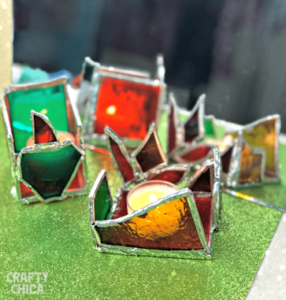How To: Frame Stained Glass Panels using Zinc Came
Intermediate / Advanced
How To:
Frame Stained Glass Panels using Zinc Came
"Came" is a channel made from a variety of metals and is available in various shapes. The two most commonly used metals used to manufacture came are lead and zinc. We carry multiple sizes of both Zinc Came and Lead Came on our website. Zinc Came is available in different widths. The wider the width, the stronger it is. Zinc Came is rigid and can be a challenge to cut. It lends itself well to geometric shapes. When used as a border for a stained glass panel, it will provide a nice clean, strong edge to that panel. Choose a width based on the look of your piece as well as the size. “U” Came / Capping Came is easier to work with but has little strength. Materials & Tools Needed:- Your Stained Glass Panel
- Your choice of Zinc Came
- Your choice of hangers (we show Handy Hangers in this tutorial)
- Ceiling Tile or equivalent heat resistant work surface
- Push Pins (Straight Edges – Optional)
- Sharpie
- Ruler / Measuring Tool
- Fine toothed Hack Saw or Came Saw (Miter Box – Optional)
- Metal File
- (Masking or Electrical Tape - Optional)
- Soldering Iron, Stand, and Damp Sponge
- 60/40 Solder
- Flux and Flux Brush
Note: Click on photos to view them larger!
Note: Steps will not always happen in order, especially measuring and cutting. You will be going back and forth!
Measuring the Came: Cut a short piece (1” to 2”) of your Came to use as a marking gauge. Lay it over another piece of came (both pieces are laying on their side as though they were on a finished piece!) and mark the width of the gauge (both sides) onto the gauge came. Draw a diagonal from corner to corner of these marks. This will give you a 45° line to cut on. Making an accurate mitered edge
Making an accurate mitered edge
Using gauge came to measure and mark frame came After cutting, you can see the center channel lines up with the end of the glass panel
After cutting, you can see the center channel lines up with the end of the glass panel
 Place the blade of your saw over the cut line and saw straight down. Let the saw blade do the work, do not force the cut. Cut all sides and make allowances for hangers.
Dress each cut with a file to remove any burrs and to fine tune the angle that you cut.
Place the blade of your saw over the cut line and saw straight down. Let the saw blade do the work, do not force the cut. Cut all sides and make allowances for hangers.
Dress each cut with a file to remove any burrs and to fine tune the angle that you cut.
 Look at that beautifully fitted mitered edge!
Look at that beautifully fitted mitered edge!
 Making room for a Handy Hanger
Soldering the Zinc Came Frame:
NOTE: Soldering Zinc requires more heat than copper foil.
Dry fit the sides to your stained glass panel and secure in place with pins.
Making room for a Handy Hanger
Soldering the Zinc Came Frame:
NOTE: Soldering Zinc requires more heat than copper foil.
Dry fit the sides to your stained glass panel and secure in place with pins.
 (Popsicle Sticks can be used as shims under the glass, if tipping is noticed.)
(Popsicle Sticks can be used as shims under the glass, if tipping is noticed.)
 Details of angled soldering iron and finished and unfinished joints
Details of angled soldering iron and finished and unfinished joints
 Wax and hang. Cleaners and Polishing (stainedglassexpress.com)
Note: Completed panels can be heavy. Use a chain or cable that will easily support its weight.
Sources:
Everything Stained Glass – Molly Frances
Ezine Articles – Maurine Summy
Living Sun Glass – Samantha Calder
James A Veilleux
Researched, Interpreted and Arranged By: James A Veilleux
04/05/2023
Wax and hang. Cleaners and Polishing (stainedglassexpress.com)
Note: Completed panels can be heavy. Use a chain or cable that will easily support its weight.
Sources:
Everything Stained Glass – Molly Frances
Ezine Articles – Maurine Summy
Living Sun Glass – Samantha Calder
James A Veilleux
Researched, Interpreted and Arranged By: James A Veilleux
04/05/2023


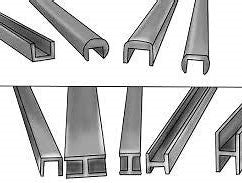





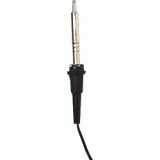

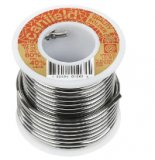

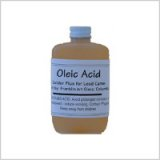
























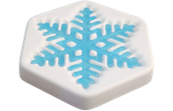

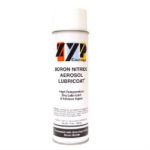








 There are many different glues that behave differently and have different uses. Let's take a look at a few!
There are many different glues that behave differently and have different uses. Let's take a look at a few!






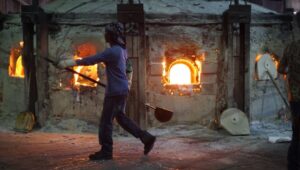 What I heard is that their extremely interesting furnace is now not operating and has been replaced with day furnaces. This is a round furnace with a down draft which I so wish I had seen while it was still operating. Kokomo was founded in 1888, making it the oldest producer of glass in the United States.
What I heard is that their extremely interesting furnace is now not operating and has been replaced with day furnaces. This is a round furnace with a down draft which I so wish I had seen while it was still operating. Kokomo was founded in 1888, making it the oldest producer of glass in the United States. The transition caused lapses in production, and we have not been able to stock as much as we would like. One of their key personnel retired after returning from a bout with Covid. Apparently Covid took its toll at Kokomo, which also slowed down production because of employees being absent. We have been assured that all is back on track, and we will be seeing more glass!
The transition caused lapses in production, and we have not been able to stock as much as we would like. One of their key personnel retired after returning from a bout with Covid. Apparently Covid took its toll at Kokomo, which also slowed down production because of employees being absent. We have been assured that all is back on track, and we will be seeing more glass!
























